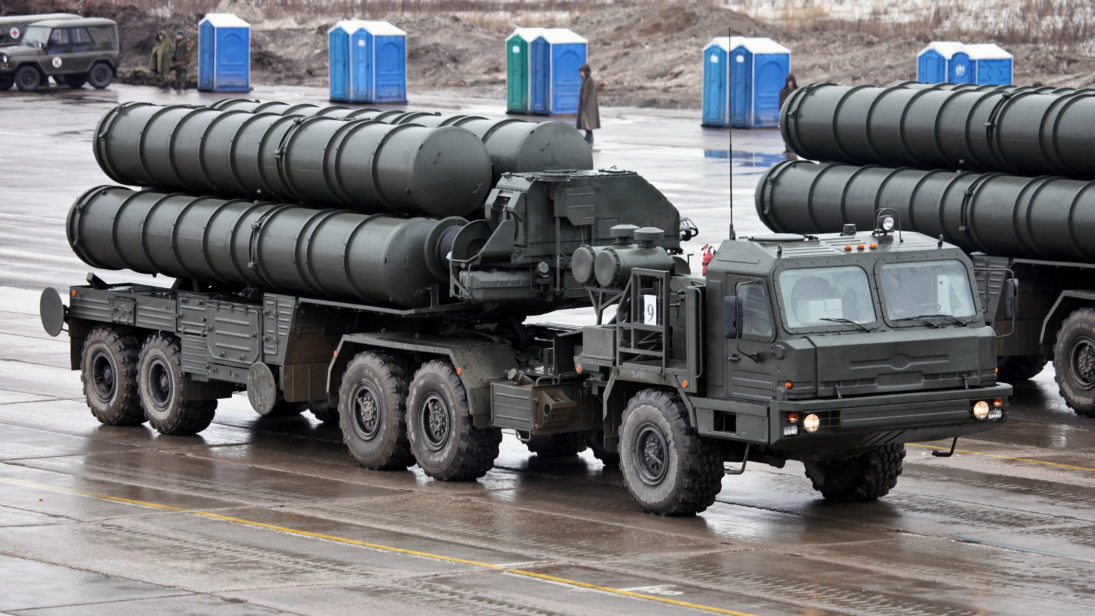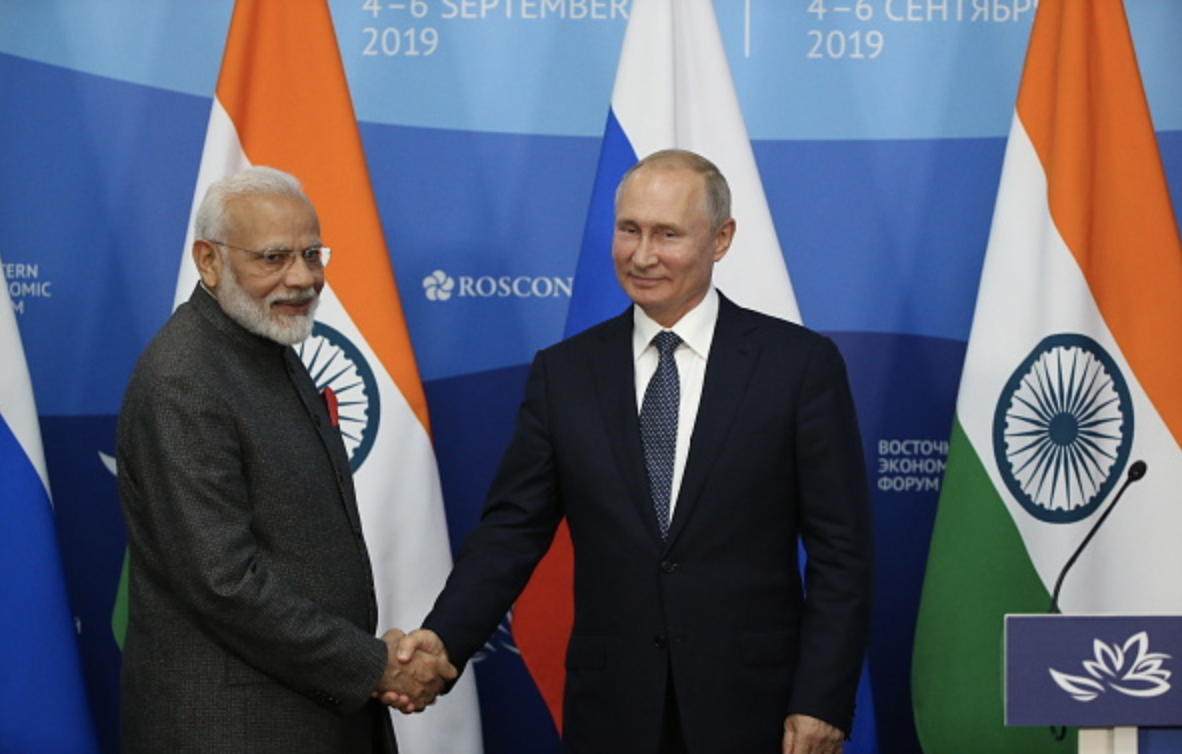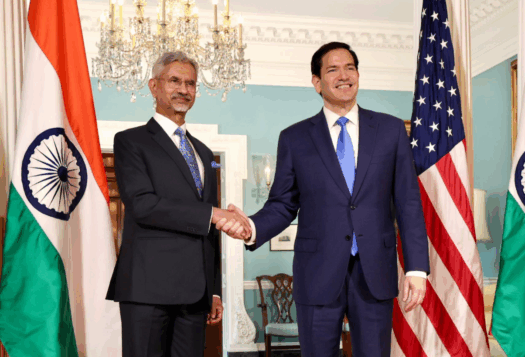
The outgoing U.S. Trump administration tried to dissuade India from inducting the S-400 air defense system it purchased from Russia, warning India of potential sanctions under the Countering America’s Adversaries Through Sanctions Act (CAATSA). With the imposition of the U.S. sanctions on Turkey through CAATSA in December 2020, the threat of placing India under similar sanctions risks both incentivizing India to strengthen its relationship with Russia and hindering Washington’s ambitions of partnering with India as a counter-balance to China. The United States’ threat to impose sanctions places India in an uneasy position and invokes a history of tension between the two states. Specifically, this risks the possibility that the United States may overlook the point that a militarily advanced India (albeit through Moscow’s support) could serve as a more effective means of deterrence against China.
Russia’s technology, combined with India’s low production cost, supports India’s effort to indigenize its weapons. Despite India’s efforts to pursue its Make in India goal, the country continues to be a top customer for Russia’s defense market.
The India-Russia Relationship
It is not surprising that following the cooling down of tensions between India and China at the Line of Actual Control (LAC) in 2021, India’s Foreign Minister Harsh Vardhan Shringla met with his Russian counterparts, Russian Foreign Minister, Sergey Lavrov and Deputy Foreign Minister, Igor Morgulov in Moscow. The discussions re-instated their friendship based on “reinforc[ing] the close and strategic partnership,” which the Indo-Russia relationship has previously enjoyed. However, the most important take away from the meeting remains the fact that Shringla thanked Moscow for providing an avenue through which India could undertake disengagement talks with Chinese forces at the LAC. This is contrary to India and China’s decision to shun the United States when it wanted to play a mediatory role, with both countries stressing that the Sino-Indo border tensions are a bilateral issue that do not require outside interference.
The visit of the Foreign Secretary was preceded by the comments from the Indian Ambassador to Russia, D.B. Venkatesh Varma, who highlighted the importance of the Indo-Russian S-400 defense deal. The secretary level talks were also preceded by Foreign Office Consultations on issues of representation in the UNSC and India’s strategic priorities during its tenure as a non-permanent member. Another issue that contributes to the possible waning and cutting off of U.S. influence in the region is India pushing for the inclusion of the Iranian Chabahar port in the ongoing construction of the International North–South Transport Corridor (INSTC), an approximately 4,475 mile long ship, rail, and road freight corridor that would move goods between India, Russia, Iran, and 10 other West Asian and Central Asian countries.
The India-Russia relationship is shaped by a variety of factors, defense cooperation being one of them. A major proportion of the platforms, weapons, and equipment in service with the Indian military is of Russian origin. In contrast to the United States, Russia’s technology is more compatible with India’s arsenal, making it an attractive and more convenient option for India. Joint production and transfer of technology are one of the most valuable aspects of India-Russia defense relationship. Russia’s technology, combined with India’s low production cost, supports India’s effort to indigenize its weapons. Despite India’s efforts to pursue its Make in India goal, the country continues to be a top customer for Russia’s defense market.

The India-U.S. Relationship
The United States, which is averse to India’s decision to buy the Russian S-400 missile systems, will have to acknowledge the close defense relationship shared by India and Russia before threatening the former with sanctions. Any move to impose sanctions on India under CAATSA, an act aimed at targeting Russia, could threaten America’s relationship with India, a potential partner in counterbalancing China.
Despite developments in the India-U.S. relationship, including the 123 Agreement that recognizes India’s nuclear program, India’s relationship with the United States remains problematic. It is important to note India’s growing confidence in expressing its strategic independence vis-à-vis the United States. India responded to America’s warning of sanctions by reemphasizing its dedication to pursue “an independent foreign policy… [that] also applies to [India’s] defence acquisitions and supplies… guided by [India’s] national security interests.” This statement is in stark contrast to India’s response during the 1998 nuclear tests that resulted from international backlash to the tests. India felt the need and pressure to explicitly clarify its decision to conduct the tests; therefore, then-Prime Minister Atal Bihari Vajpayee wrote a letter to the Clinton administration, explaining the country’s concern of sharing a border with China, a nuclear country that had engaged in military conflicts with India.
India is a valuable partner for the United States in terms of both counterbalancing China and maintaining stability in Afghanistan. The country’s importance in the Afghan peace talks was recently underscored when India was included in the United Nations regional conference on Afghanistan despite Russia’s suggestion to exclude the country, apparently at the request of Pakistan. The converging interests between Russia and Pakistan to see Taliban as a key stakeholder in Afghanistan’s future is a key factor for cooperation between the two countries. Russia’s importance in the peace process is underlined by the latest meeting that will include representation from the Taliban, Afghan government, the United States, China, and Pakistan. In contrast, India has been reluctant to publicly engage with the Taliban. America’s support for India’s inclusion in the Afghan peace talks could allow India and Russia to circumvent the pressure of Pakistan and provide scope for further engagement. The potential for India-Russia cooperation in Afghanistan is favorable to the United States’ interests as it moves towards withdrawing most of its troops from the war-torn country. Regional consensus is important for achieving a durable solution in Afghanistan, and this bilateral cooperation would support the United States’ emphasis about the responsibility of regional players to bring stability in Afghanistan.
Nonetheless, any move that might signal another era of India-U.S. bilateral ambivalence could significantly rupture the improving ties as both nations have a history steeped in anxiety, insecurity, and distrust.
The Future of the India-U.S. Relationship
Rather than putting India in a position where it expects similar sanctions to those imposed on Turkey, the United States should instead shift to a softer tone to push India to increase its defense cooperation with the former. The United States can use its recently improving ties with India to extract trading benefits in the INSTC instead of trying to disturb an already cemented and special Indo-Russian relationship by virtue of CAATSA sanctions. This would not only help the United States continue to make its presence felt in Asia but can also increase its leverage in the region.
Nonetheless, any move that might signal another era of India-U.S. bilateral ambivalence could significantly rupture the improving ties as both nations have a history steeped in anxiety, insecurity, and distrust. This ambivalence would not only continue pushing India towards Russia but could also risk creating a rift in pursuing security ties with its much-needed partner in Asia.
In the 2015-19 period, Russia remained the biggest arms supplier to India, with Russian arms exports to India accounting for 25 percent of Moscow’s total arms exports and 56 percent of India’s total imports. On the other hand, although the United States was the second largest arm supplier to India between 2010-14, its exports to the country dropped by 51 percent in the 2015-2019 period as India sought to diversify its exports. The U.S. military influence in Asia is affected by the dominance of Russia and growing influence of China in the arms export market. This problem is further compounded by the fact that while the United States wishes to make its military presence felt in Asia, its total arms exports in the region fell by 20 percent in 2015-19 as compared to the period of 2010-2014.
In repairing this damage, one way that the United States can inch closer towards a deepening strategic partnership with India is to harp “on the solid foundation of shared values, shared interests and [their]… increasingly shared view of how best to promote stability, security and peace worldwide in the 21st century.” Also, rather than trying to delineate the established Indo-Russian friendship, the United States needs to focus on making itself a more attractive and profitable defense partner to India. It could do so by developing joint ventures with Indian defense technology firms, offering long-term balance of payment options for the purchase of defense equipment, and providing relaxations on the price of arms purchases. However, all these policy measures can only remain successful if Washington realizes the long-term benefits of a militarily strong India that is capable of enhanced deterrence capabilities against a rising China.
***
Image 1: Wikimedia Commons
Image 2: Mikhail Svetlov via Getty Images


